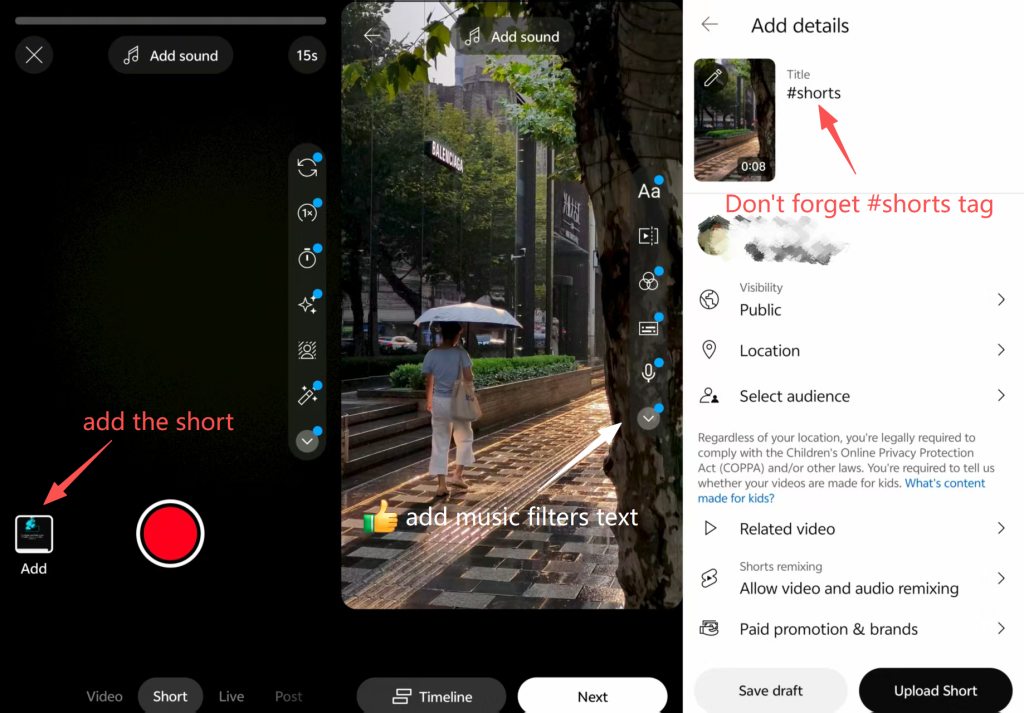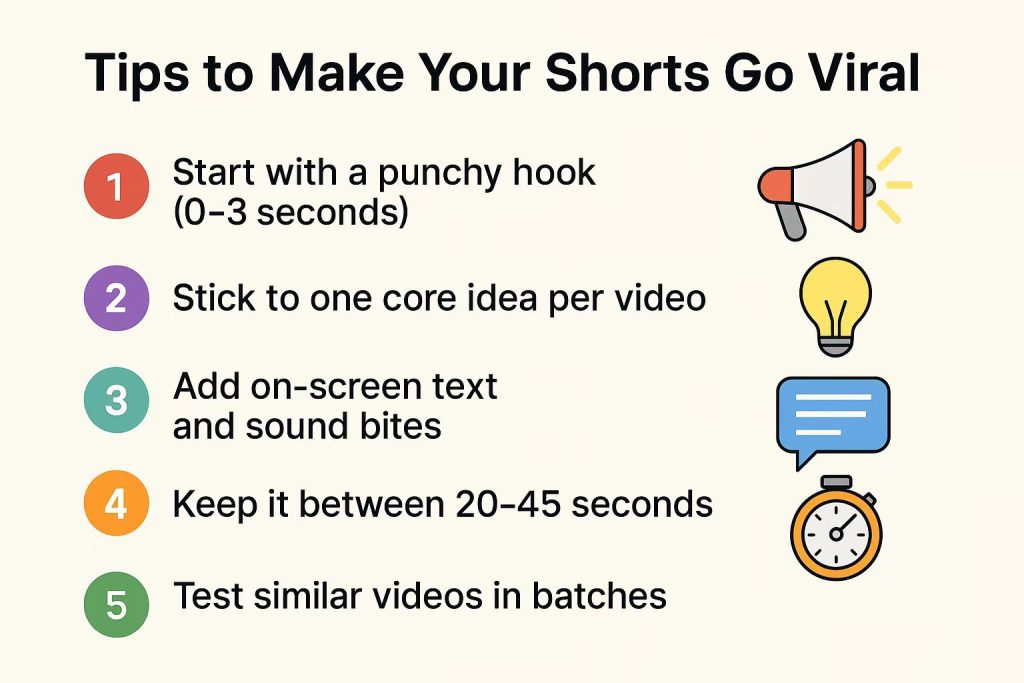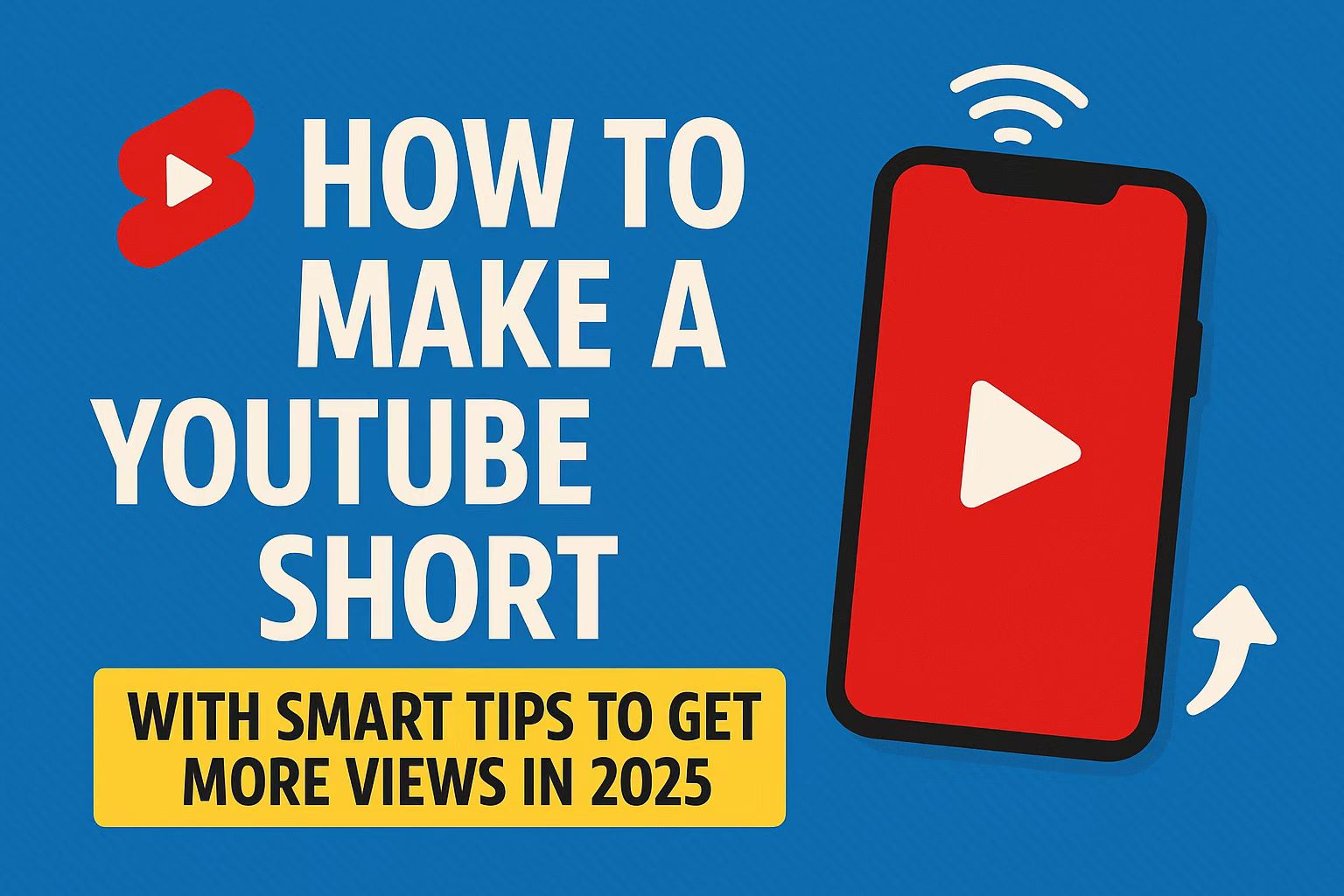Last Updated on September 10, 2025 by Leslie
So… you’ve heard people talk about YouTube Shorts. Maybe you’ve even tried posting one or two. But then—no views. Or maybe you’re still wondering what Shorts are even good for.
Here’s the truth: if you’re serious about growing on YouTube in 2025, learning how to make a YouTube Short the right way isn’t optional anymore. It’s one of the fastest, cheapest, and most effective ways to get attention—whether you’re starting from zero or already have long-form content out there.
In this guide, I’ll walk you through the full process of making a YouTube Short, explain why it’s such a big deal, show you what to avoid (so your videos don’t flop), and give you some real examples that actually worked.
Why YouTube Shorts Are Such a Big Deal Right Now
Let’s start with the basics.
YouTube Shorts are short-form vertical videos (under 60 seconds), and they live in their own special feed—kind of like TikToks or Reels. But here’s what makes Shorts different: they can appear everywhere.
They show up:
- In the dedicated Shorts feed
- On the YouTube homepage
- Inside search results
- In the “Suggested” section under long-form videos
- On your channel’s video tab
In other words, Shorts give you more ways to get discovered than regular videos.
Even better? You don’t need subscribers. You could have 5 subscribers and still get 100,000 views on a single Short if the algorithm likes it. That’s because Shorts are designed to go viral based on watch time, replays, and early engagement—not based on your subscriber count.
Turn Shorts Into Long-Form Views
Here’s a smart trick most new creators don’t even realize:
If you use YouTube’s “Remix” feature to turn part of your existing video into a Short, YouTube will automatically include a link back to your original video.
That means when someone watches your Short and gets curious, they can tap a single button and be taken straight to the full version. Instant traffic.
This works beautifully for:
- Tutorials: Share a quick tip → link to the full lesson
- Storytime content: Tease the dramatic moment → lead to full story
- Product reviews: Show a 10-second wow moment → link to full review
You’re not starting from scratch. Shorts can breathe new life into your older videos—and bring in more watch time, more subscribers, and more channel activity.
How to Make a YouTube Short Step by Step
Alright, let’s walk through the actual process of making a YouTube Short. Whether you’re filming something brand new or repurposing your older content, there’s a method for everyone.
Here are three ways to do it:
Option 1: Record and Upload a New Short
This is the most common method, and it’s built right into the YouTube app.
- Open the YouTube app on your phone.
- Tap the “+” button at the bottom of the screen.
- Select “Create a Short.”
- Choose either 15 seconds or 60 seconds as your max time.
- Record your video (make sure it’s in vertical format).
- You can add music, filters, voiceovers, and text using the in-app tools.
- Once you’re happy with it, upload it. Just don’t forget to include the #shorts tag in your title or description.
Important tip: Your short video must be in 9:16 vertical ratio, or YouTube might not treat it as a Short, and it won’t show up in the Shorts feed.

Option 2: Remix from an Existing Video
If you’ve already published long-form videos, you can easily turn parts of them into Shorts using the Remix feature. This is a great way to highlight your best moments and drive viewers back to your full videos.
Here’s how it works:
- Go to one of your existing videos on YouTube.
- Tap the “Remix” button under the video (you’ll see it next to like/share options).
- Choose “Edit into a Short.”
- Select the moment you want to clip.
- Add captions, music, or a quick voiceover if needed.
- Publish it as a Short—and YouTube will automatically include a clickable link back to your original video.
Bonus: This method is super useful if you already have a content library. You don’t need to reshoot anything—just repurpose and recycle.
Note: The Remix → “Edit into a Short” feature is not available in all countries yet. If you don’t see the option, it’s likely that YouTube hasn’t rolled it out in your region. But don’t worry—you still have another solution.
Option 3: Use GStory’s AI Clip Maker
If you want more editing flexibility—or if the Remix feature isn’t available in your region—GStory’s AI Clip Maker gives you a fast, smart way to turn any long video into a Short. This tool doesn’t just chop up your footage—it uses AI to find the most engaging moments based on visual changes, tone of voice, or emotional highlights. It also lets you repurpose old tutorials, interviews, vlogs, or webinars and transform them into punchy, vertical Shorts without losing quality. Even better, it works right in your browser, no mobile app required.
And if you’re trying to drive traffic back to your full video, you can include the original video link in the description, add it in a pinned comment, connect it through the “related video” setting during upload, or insert it using info cards and end screens—so viewers can easily jump from your Short to your long-form content.
Here’s how to use it:
- Upload your full video to GStory
- Select “AI Clip Maker” from the toolbox
- Let the AI auto-select the highlights—or fine-tune them manually
- Add captions, crop to 9:16, and apply any final tweaks
- Export your finished Short, ready for upload
Whether you’re a new creator or managing multiple channels, GStory helps you create Shorts that are fast, clean, and built to perform.

Why Your YouTube Shorts Might Be Getting Low Views
Let’s get real—most Shorts don’t go viral.
And that’s not your fault. It’s just how YouTube works.
The truth is, Shorts aren’t a magic button for views. They’re a long-term strategy tool—a way for YouTube to learn what kind of channel you are, and who might like your content.
Unlike TikTok, which thrives on quick-hit virality, YouTube Shorts are more about building a viewer profile. In other words, Shorts help the algorithm figure out if you’re worth recommending beyond one viral hit.
So if you’re stuck at 1K or 10K views? That’s actually part of the system. YouTube does tiered testing:
- A few hundred views? That’s phase one.
- Hit 10K? That’s the “niche saturation” test—can you break out of your bubble?
If not, YouTube assumes the Short has done its job.
Now let’s talk about the viewer’s side of things.
Your title and first 3 seconds are the hook. They’re a promise. If you don’t deliver fast, viewers scroll—and YouTube notices.
So always ask yourself:
- Does your Short deliver value immediately?
- Are you wasting time with intros or vague setups?
- Is your title crystal clear about what the viewer will get?
The chain looks like this:
Click → Stay → Enjoy → Engage → Subscribe
Break that chain anywhere, and your Short dies early.
Lastly, here’s the mindset shift that helps most creators:
- Don’t focus on views. Focus on training the algorithm.
- Don’t aim to go viral. Aim to stay consistent.
- Shorts aren’t the end goal—they’re the entry point.
That’s how real growth happens.
How To Go Viral on YouTube
After all the talk about algorithms and trust-building, let’s get back to what you can control: the way you plan, film, and present your Shorts.
Here are some creator-tested tactics that work—consistently.
- Start with a punchy hook (0–3 seconds) No intros, no slow build-ups. Hit the viewer with something they care about, fast. Use shock, emotion, humor, or curiosity.
- Stick to one core idea per video Shorts aren’t mini vlogs or full tutorials. They’re idea bombs. One idea. One message. One payoff.
- Add on-screen text and sound bites Most people watch on mute. Subtitles, emojis, fast-paced cuts—they all help retention.
- Keep it between 20–45 seconds Unless there’s a good reason to go longer, shorter = better retention = better push.
- Test similar videos in batches Have an idea? Make 3 variations. Change hook / pacing / visual style. Post and see what sticks. You don’t need to guess anymore—you test your way to success.

Just Start
Here’s what I always tell new creators:
Don’t wait until everything is perfect. Your first Shorts don’t need to be flawless. What matters is getting started—because every Short you make teaches you something new.
But also: be smart. Start with a clear format. Write a short script or outline. Add energy. Use tools that help (AI caption generators like GStory, background removers, or pre-made templates).
Because Shorts aren’t a side feature anymore—they’re part of the core YouTube strategy. And if you use them right, they can grow your channel faster than anything else.
FAQ About YouTube Shorts
Why can’t I make a Short on YouTube?
There are a few possible reasons:
- The “Create a Short” feature might not be available in your region yet.
- Your app version may be outdated—update it to the latest.
- If you’re trying to use Remix but don’t see it, it’s likely not rolled out in your country.
You can still make Shorts using video editors and upload them manually—just make sure they meet YouTube’s format requirements.
What are the requirements for YouTube Shorts?
To be recognized as a Short, your video must:
- Be 60 seconds or less
- Have a 9:16 vertical aspect ratio
- Follow YouTube’s community guidelines
- Be uploaded via the mobile app or as a vertical video via desktop
- Include #Shorts in the title or description (optional, but recommended)
There’s no need to join a separate program—any eligible account can create Shorts.
Is it free to make YouTube Shorts?
Yes, it’s 100% free. You can record and upload Shorts directly through the YouTube app. You don’t need special software, and there’s no cost to post. Some creators use tools like CapCut, VN, or GStory AI to enhance editing—but that’s optional.
What’s the ideal length for a YouTube Short?
Most successful Shorts are between 20 and 45 seconds. This keeps the content tight and improves your retention rate, which is what the algorithm really cares about. If people drop off early, that hurts performance—so aim to deliver value fast and keep the pacing high.
My audience only watches 30 seconds of my Short—should I still make it 60 seconds long?
Probably not. If most viewers drop off at 30 seconds, you’re better off trimming your content. Use YouTube Analytics to find the exact second people lose interest, and restructure your short video accordingly. This small change can dramatically improve your average view duration and algorithm reach.
Can I use AI tools to make better Shorts?
Absolutely. Tools like GStory’s AI Clip Maker can help you:
- Find the most engaging parts of a longer video
- Automatically add captions
- Crop and format into 9:16 vertical
- Clean background distractions
It’s a smart way to save time and keep your quality consistent—especially if you’re publishing Shorts regularly.
Can I get a transcript from a YouTube video to help write Shorts?
Yes. Transcripts make it easier to plan and script your Shorts. You can get a transcript from a YouTube video using GStory’s tool or other methods to quickly find key moments worth turning into Shorts.
